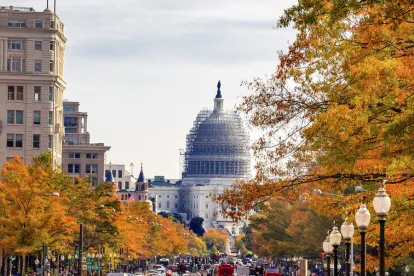When the dust settles on 2016, and Congress is receiving year-end grades from political pundits, voters and even self-evaluations from the Members themselves, there will no doubt be a common refrain that election year politics, gridlock and a short legislative calendar have yet again left too many important issues unresolved. But one important piece of legislation has quietly made its way through both Chambers and now is headed to the President’s desk, that responds to a growing and costly problem robbing the U.S. economy of money, jobs and the very ideas that we depend upon to remain competitive in a global marketplace. It is a significant legislative accomplishment in an election year or any year.
The bipartisan Defend Trade Secrets Act (S.1980), or DTSA, will bolster economic growth and job creation by ensuring that our most innovative companies have better tools to protect their trade secrets from theft. DTSA creates a federal civil cause of action for trade secret misappropriation that is modeled on the Uniform Trade Secrets Act. It allows a victim of trade secret theft to obtain a seizure order in federal court with a showing of extraordinary circumstances. The bill allows misappropriated property to be seized with careful safeguards, while preserving the freedom of employees to move from one job to another.
Trade secrets include proprietary technologies and techniques, formulas and codes, customer lists, unique manufacturing processes, and other innovations that are invaluable to the companies that own them. Yet trade secrets only are afforded limited protection under federal law. And the patchwork of state laws that companies can call upon to attempt to address trade secrets theft are insufficient in our high-tech, globalized world. And while federal law protects trade secrets through criminal sanctions in the Economic Espionage Act of 1996, that statute offers no civil remedy to victims of trade secret theft, leaving trade secret owners unable to protect their property using the same tools available to owners of other forms of intellectual property, namely patents, trademarks, and copyrights. DTSA will create much-needed uniformity in trade secrets law nationwide, simplifying and streamlining the process by which companies can protect their most valuable assets.
The story of DTSA’s passage is one that can serve as an important model for other legislative issues. It’s about coalition-building, both on and off the Hill. It passed because Members of Congress with different philosophies joined together, deftly navigated a difficult political climate, improved their bill along the way, and worked hard to develop and maintain a durable consensus all the way to the finish line. The bill was introduced by the Senate’s senior Republican, Senator Orrin Hatch (R-UT), and enjoys the strong support of the Obama Administration. It emerged from the often contentious Senate and House Judiciary Committees without opposition, navigated by capable lead sponsors Senator Chris Coons (D-DE), Rep. Doug Collins (R-GA) and Rep. Jerrold Nadler (D-NY), along with Hatch. It passed the Senate 87-0, and then it then passed the House 410-2.
Part of DTSA’s story is also the wide array of U.S. companies and trade associations across virtually all sectors of our economy, that joined together to help Congress address trade secret theft. The Protect Trade Secrets Coalition bolstered DTSA’s sponsors’ efforts to build support at every step along the way. Each Coalition member understands trade secrets theft from their own experiences, so we learned about different aspects of the problem and worked together to take steps towards solving it. We made our case that costly theft is occurring every single day from within the companies themselves and from competitors domestic and foreign. Congress listened, and acted decisively on this compelling story, as evidenced by the overwhelming support for the bill. A lesson of DTSA’s passage is that developing legislation can still be about education and problem solving, can still bring together Members of Congress and stakeholders that have different agendas and perspectives, producing a stronger work product, to the benefit of the American people. Even in an election year.






 />i
/>i
